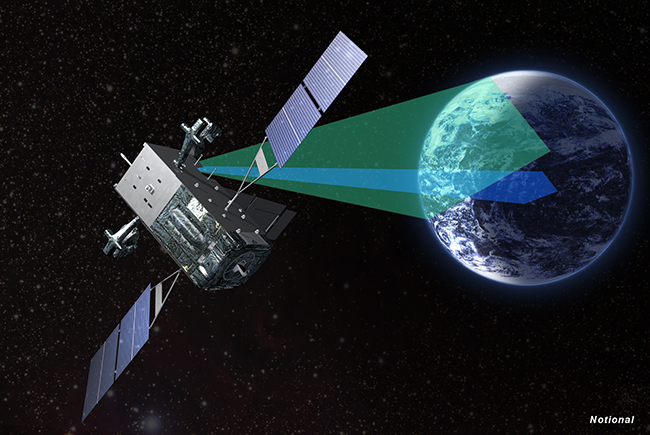
The missile warning Space-Based Infrared System is shown here as an artist rendering. Lockheed Martin illustration.
Defense officials are expected to meet this week to discuss a $623 million reprogramming request needed to buy parts for the Next-Generation Overhead Persistent Infrared program and keep prototyping moving quickly, the Air Force’s acquisition executive recently told reporters.
“We requested reprogramming in ‘18. It was approved but not all the sources were, so we got part of it,” Will Roper said April 10 at the Space Foundation’s Space Symposium. “We’ve rolled the delta into the ‘19 request so we’re very hopeful that we’ll be able to get it. … The fact it’s that big tells you how mature the design is.”
If the request isn’t approved, missile-warning sensor prototyping underway with Raytheon and a Northrop Grumman-Ball Aerospace team would start slowing in July, pushing back component integration and testing. It could also mean the new OPIR satellites are launched in 2027 or 2028 instead of 2025.
“Both vendors are being really good, trying to figure out how to not have work stoppages,” Roper said. “They all want to see it happen.”
Lockheed Martin and Northrop Grumman each have a piece of the fast-paced, multibillion-dollar satellite-building program that will replace the Space Based Infrared System.
“We have made it through system requirements review already and it’s less than a year since we signed the acquisition strategy,” Roper said. “The preliminary design on the sensor will be done this week. We’ll be done with system PDR by the end of this fiscal year. … The reason we can get all of that design work done so quickly is that the components we’re using are mature.”
